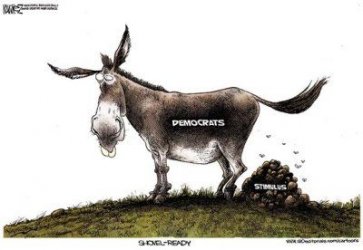The average Unemployment rate for Bush's 8 years was 5.2%.
Quoting the average unemployment rate during Bush's term is one way (of many) of trying to obscure that fact that the economy fell apart in the last two years of Bush's presidency -- even WITH those low tax rates. Imagine that.
Who took over complete control of Congress in 07'?
This is one of the tactics I've always found objectionable when partisans (from either party) try to use it as a pseudo get-out-of-jail-free-card to evade responsibility for active policies of their own party by somehow insinuating that a congressional majority by the "other" party means that no responsibility can be attributed to their own party which just so happens to run the executive branch AND, all the cabinet posts, the regulatory boards, and their policy apparatus.
Edit to add: Keep in mind that Bush 43 never vetoed one spending bill (or any bill of any kind) in his first six years in office.
Last edited:





